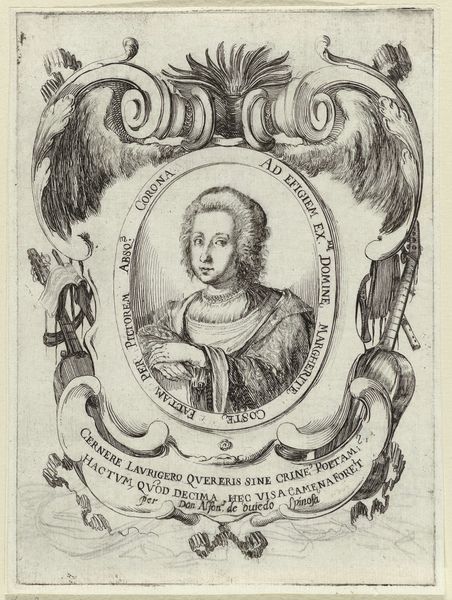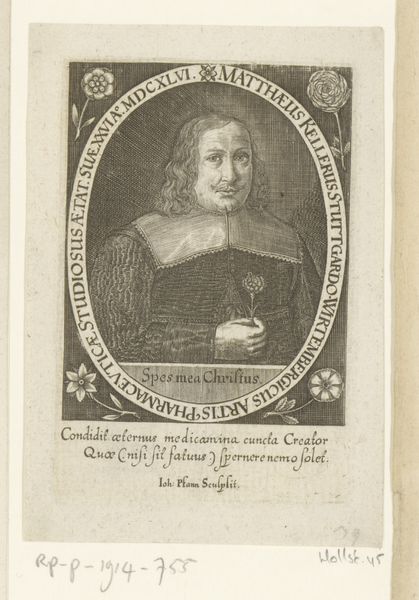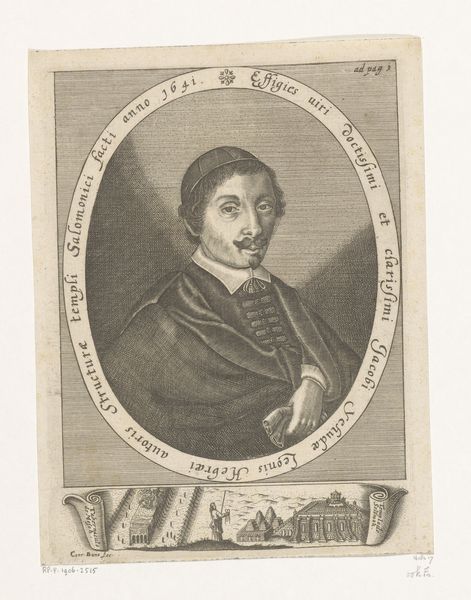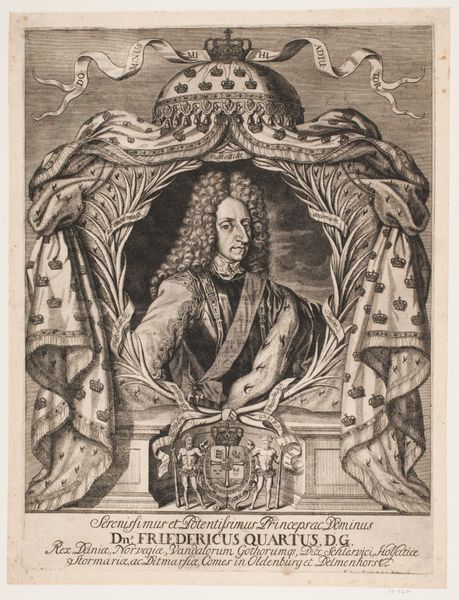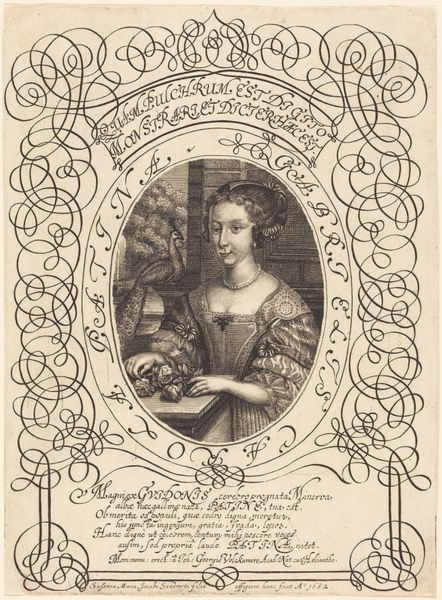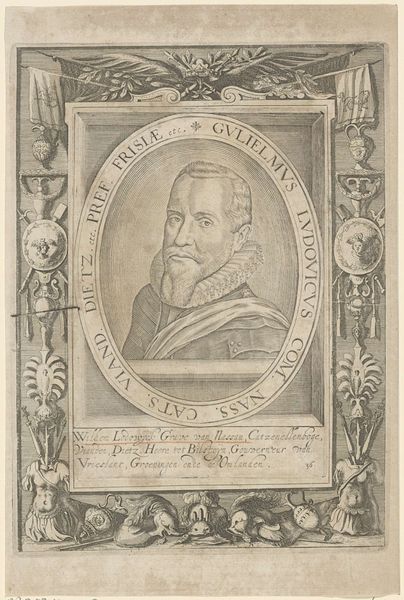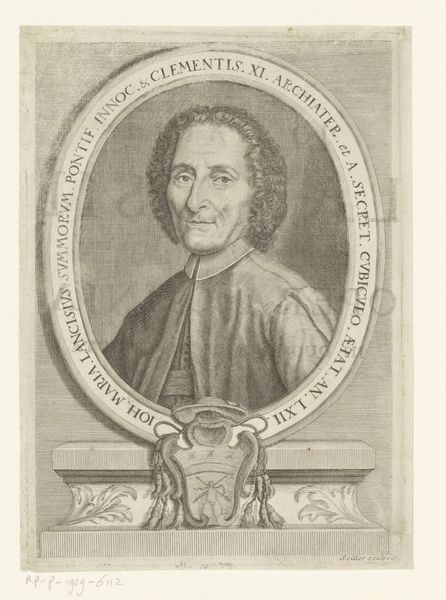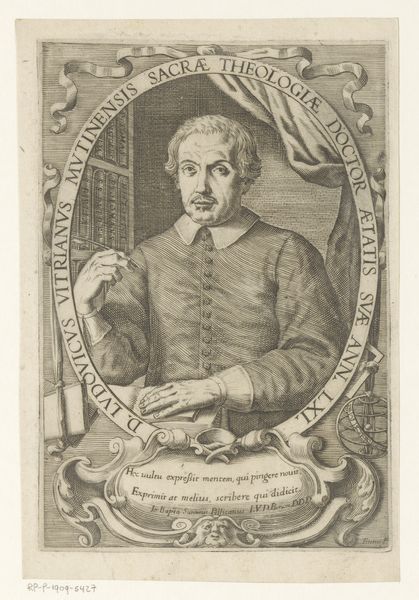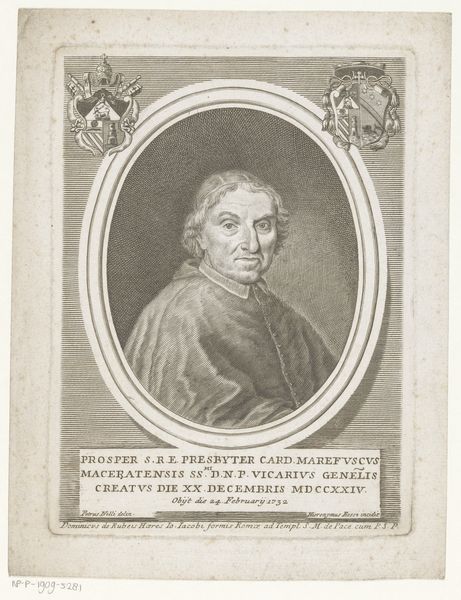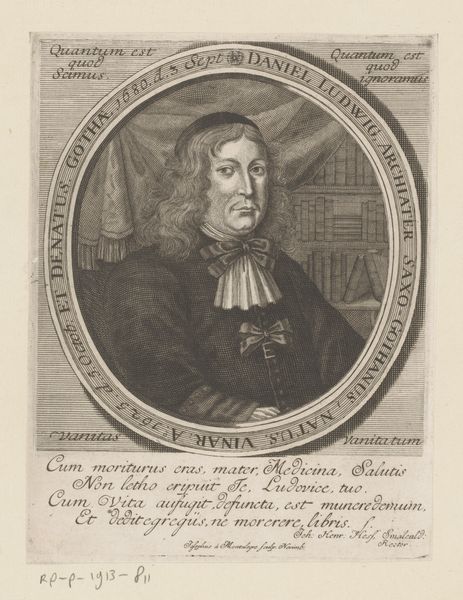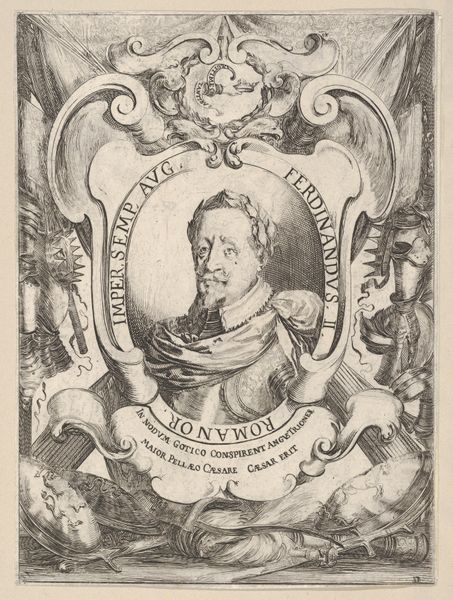
print, engraving
#
portrait
#
baroque
#
pen drawing
# print
#
figuration
#
line
#
history-painting
#
academic-art
#
engraving
Dimensions: height 179 mm, width 130 mm
Copyright: Rijks Museum: Open Domain
Curator: What strikes me immediately about this piece is the detail, particularly given it’s an engraving. There’s a delicate stillness to the subject framed within that elaborate baroque border, like a captured thought. Editor: That's a fantastic way to put it. This is "Portret van Marguerite Costa," attributed to Stefano della Bella and created sometime between 1620 and 1664. Currently, it resides in the Rijksmuseum. It's really quite exemplary of portraiture during that era. What do you think, aesthetically, grabs your attention first? Curator: Definitely the intricacy of the frame. It’s almost theatrical, drawing my eye away and back to the face itself. It’s as if the frame is not just a border but a character in its own right, wouldn't you say? Editor: Absolutely. The use of ornamentation, the almost excessive detail in the border, speaks volumes about status and power during that period. Remember, these portraits often served as a form of social currency. But I also see something more subdued here; Costa isn't gazing out confidently. Curator: Yes, she appears quite internal, almost contemplative. It feels intimate despite the obvious grandiosity surrounding her. There’s something undeniably human, vulnerable even, captured in those fine lines. Maybe a bit melancholy? Editor: I think you're right. We should consider, too, how portraits like these often served to define and constrain identities, particularly for women. Consider how her expression is eternally frozen, codified by class and gender. In my view, such depictions tell us just as much about society's constraints as they do about individual personalities. It forces the subject into this predetermined script, whether intended by the artist or the commissioner or not. Curator: That’s a beautiful, perhaps unsettling thought, when applied to a likeness from centuries past. She’s a poem caught between her world and ours. Editor: Indeed, she's a figure shaped by her time but also reaching towards ours, inviting a dialogue across the ages. It’s precisely these tensions that make this work so compelling, the dialogue between the sitter’s inner world and our own perspectives that art brings to light.
Comments
No comments
Be the first to comment and join the conversation on the ultimate creative platform.
